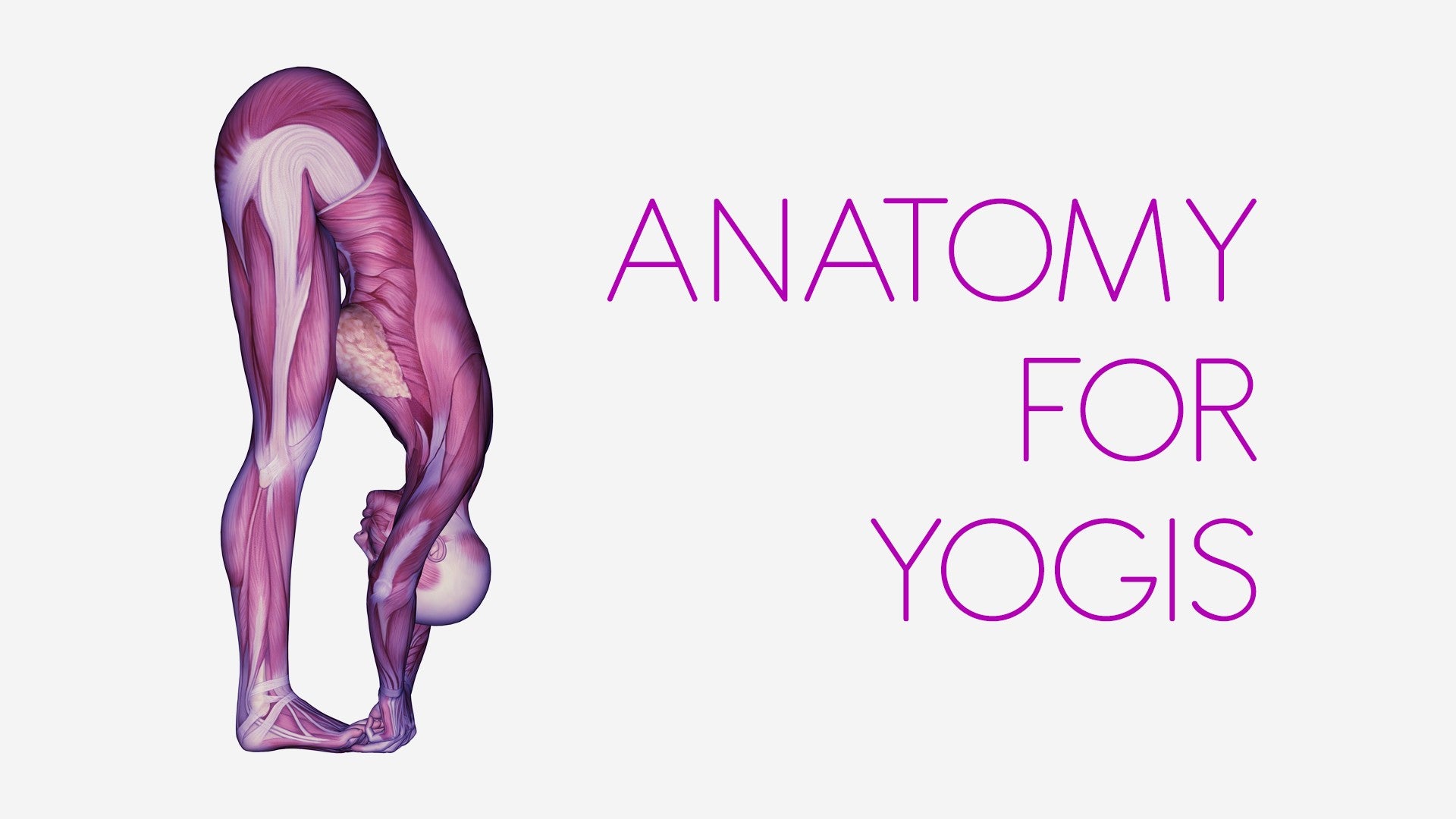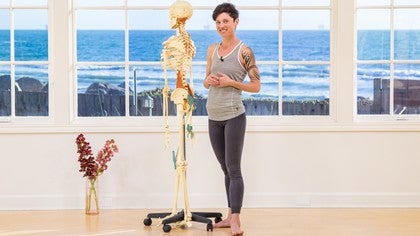Description
About This Video
Transcript
Read Full Transcript
Hi everyone, in this segment I'd like to introduce the shoulder joint and just name the different parts of the shoulder girdle and I'll talk a little bit about the relationship of the shoulder to the hand. So here is a shoulder joint and obviously in your body the shoulder isn't or the arm bone isn't held to the shoulder girdle by something metallic. So you can imagine that this, which is the upper end of your humerus bones, that's your upper arm bone, it's called the head of your humerus, is actually kind of held a little bit tighter in this space. So whenever we're talking about a joint we're talking about two or more bones that articulate with each other and so movement happens at a joint when numerous surfaces move in relationship to one another. With this model you might get the impression that this whole part of the shoulder is fixed but in your own body you can actually move it around a lot.
The shoulder blade slides over the ribs, your collar bones are mobile and it's important that both parts or all parts move in relationship to each other for balanced joint space. So here are the parts. This is the head of your humerus, it's the upper arm bone. The head of your humerus sits in what's called the glenoid fossa, so that's the socket of the ball and socket joint. And then just above the glenoid is what's called the acromion process and process in anatomy is a fancy word for something that sticks out.
So we have the acromion process here and then here we have this really interesting shaped bone and this portion of the bone is called the coracoid process. So again something that sticks out and the coracoid process is actually part of your shoulder blade that grew around to the front to hold your arm bone in from the front. So we have the coracoid in front and the acromion on top and then the head of the humerus as the arm portion. Now when I turn the skeleton to the side you can see that the acromion process is continuous with what's called the scapular spine. So here we have what looks like a spine or a ridge at the top of the scapula.
And then the glenoid, if you follow that back, becomes the axillary border. The axilla is a fancy word for your armpit. So we have the armpit border of your shoulder blade and the armpit border of your shoulder blade culminates at the inferior angle which is often called the shoulder wingtip. So in yoga classes you might hear your teacher reference the shoulder wingtips and they're talking about the inferior angle. The portion of the shoulder blade that runs closer to the spine is called the vertebral border.
So we have the axillary border and the vertebral border and the inferior angle. Now again I just want to point out that the shoulder blade or the scapula, what this is all called, sits on top of your ribs and it actually moves around. So your scapula slide on top of their ribs, they're part of your arms. You want your scapula to be mobile. Sometimes we get in trouble when we think that the scapula are fixed and we do a lot of gripping around the musculature underneath the scapula.
So it's important that there's some mobility and play between this portion of the shoulder joint and the arm. All right, so when your arm grew, and the same goes for your legs as well, when your limbs grew back when you were an embryo, they all grew in one piece. So even though now we have many different parts, shoulder girdle, humerus, elbow joint, forearm bones, wrist joint, hand bones, when they first began to develop, it was all one continuous tissue, kind of similar to the bridge of your nose, like a cartilaginous tissue that then formed into separate bones. But because they all grew as one piece, there is a correspondence structurally from the distal end, that's the far away end, to the proximal end. In the upper arm and shoulder strengthening series, I talked about the relationship of the hands to the shoulder, and I just want to point it out what it is here.
And it's actually fairly easy to see on the skeleton. So the relationship is this. From the front of your shoulder, here we have the coracoid process, there's a relationship through the bones, through the radius, that's your forearm bone, to your thumb. So thumb to coracoid process. From the spine of your scapula and the acromion process, there's a relationship, again, through more of the inner, or the, it's called the interosseous membrane, the thing that's between these two bones, into your pointer finger.
And here you can see that your index finger and your thumb connect through the carpal bones, it's these little pebbles, into the radius. And the radius radiates around the ulna. It's the thing that gives us this type of rotation in our forearm, otherwise known as the pincer hand. So again, that's the spine of your scapula, the acromion, to your pointer finger. Then we have the glenoid fossa, and the center of your shoulder joint, relationship through the very center of the interosseous membrane, and into the middle finger.
So middle finger to center of shoulder joint. From there, we have a relationship from the axillary border, so the armpit edge of the scapula, through the inner edge of the ulna, it's your other forearm bone, and into your ring finger, the skeleton is missing part of its ring finger, but into your fourth finger. And finally, the little finger has a relationship to the inferior angle and vertebral border. When you are weight bearing in your hands, in table, in sphinx, in downward facing dog, you can check out all of these relationships simply by engaging your fingers with pressure against the floor. And you can feel the way that muscular engagement in your hand relates all the way around your shoulder joint.
So pretty cool, right? Your limbs all grew as one piece, and one part of the body relating to the other. So I hope that helped clarify the shoulder joint for you, and I hope you have a lot of fun exploring it on your own.
Anatomy for Yogis: Renee Sills
Comments
You need to be a subscriber to post a comment.
Please Log In or Create an Account to start your free trial.








